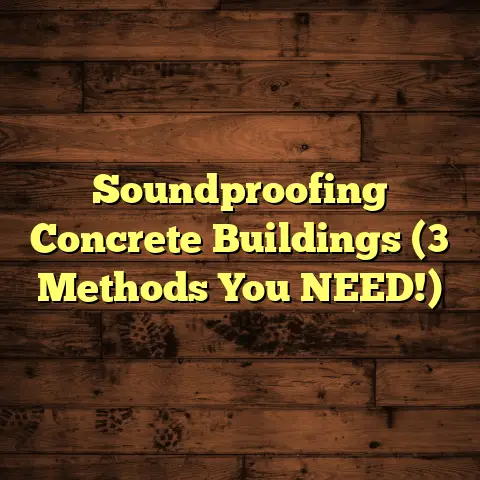How Much Will Flooring Cost Me (Explained)
When considering the installation of hardwood flooring, many factors come into play that can significantly impact the final cost. This comprehensive guide will delve into the various elements affecting hardwood flooring prices, compare hardwood with alternative flooring options, and provide insights into choosing between refinishing and replacement. We’ll also explore professional versus DIY installation costs, offer maintenance tips, and provide a list of essential questions to ask contractors.
Overview of Cost Factors
Understanding the costs involved in installing hardwood flooring requires a look at several critical factors:
1. Area Size
The size of the area you wish to cover is one of the most significant determinants of overall cost. Hardwood flooring is typically priced per square foot, so larger spaces will naturally incur higher costs.
2. Hardwood Type
Different wood species come with varying price tags. Common hardwoods like oak and maple are generally more affordable, while exotic species like Brazilian cherry or teak can be significantly more expensive.
3. Labor Costs
Labor expenses vary by location and the complexity of the installation. Professional installers may charge hourly or a flat rate based on the project scope.
4. Additional Considerations
- Floor Removal: If you have existing flooring that needs to be removed, this will add to your costs.
- Subfloor Replacement: If the subfloor is damaged or inadequate, replacing it can increase your budget.
- Material Grade: Premium grades of hardwood come at a higher price but offer better aesthetics and durability.
- Room Size/Layout: Unusual room shapes may require more cutting and fitting, affecting labor costs.
- Installation Type: Different methods (nail-down, glue-down, floating) have varying costs associated with them.
Detailed Cost Breakdown
Average Costs of Hardwood Flooring
Here’s a rough estimate of costs based on wood type and installation:
| Wood Type | Cost per Square Foot | Installation Cost |
|---|---|---|
| Oak | $3 – $8 | $2 – $5 |
| Maple | $4 – $10 | $2 – $5 |
| Cherry | $5 – $12 | $2 – $5 |
| Walnut | $6 – $15 | $2 – $5 |
| Exotic Woods | $8 – $20 | $2 – $5 |
Project Size Estimates
- Small Room (100 sq ft):
- Materials: $300 – $800
- Installation: $200 – $500
- Total: $500 – $1,300
- Medium Room (400 sq ft):
- Materials: $1,200 – $3,200
- Installation: $800 – $2,000
- Total: $2,000 – $5,200
- Large Room (1,000 sq ft):
- Materials: $3,000 – $8,000
- Installation: $2,000 – $5,000
- Total: $5,000 – $13,000
Comparison with Alternative Flooring Options
When considering flooring options, it’s essential to weigh hardwood against alternatives like laminate, vinyl, and carpet. Here’s a quick price comparison:
| Flooring Type | Cost per Square Foot | Durability | Maintenance |
|---|---|---|---|
| Hardwood | $3 – $20 | High | Moderate to High |
| Laminate | $1 – $4 | Moderate | Low |
| Vinyl | $1.50 – $5 | Moderate | Low |
| Carpet | $2 – $7 | Low to Moderate | High |
Hardwood flooring offers unmatched aesthetic appeal and durability but comes at a higher cost compared to other options.
Signs Your Hardwood Floors Need Replacement
Identifying when to replace your hardwood floors can save you from costly repairs. Here are some signs to watch for:
- Deep Scratches and Gouges: If your floor has extensive damage that cannot be refinished.
- Warping or Buckling: This could indicate moisture issues that may require replacement.
- Persistent Creaking or Squeaking: Often a sign of subfloor issues or deterioration.
- Discoloration: Extensive fading or discoloration may signal it’s time for new flooring.
Refinishing vs. Replacement
Deciding whether to refinish or replace your hardwood floors depends on the extent of wear and your budget.
- Refinishing: Ideal for floors with surface damage like scratches or dull finishes. Costs range from $1.50 to $4 per square foot and can extend the life of your floors significantly.
- Replacement: Necessary for severely damaged floors or if you desire a different wood type or style.
Pros and Cons of Hardwood Flooring
Pros:
- Aesthetic Appeal: Adds warmth and elegance to any space.
- Durability: Can last decades when properly maintained.
- Increased Home Value: Often increases resale value.
Cons:
- Cost: Higher initial investment than other materials.
- Maintenance: Requires regular care to maintain its appearance.
- Susceptibility to Moisture: Can warp or swell in high moisture areas.
Professional Installation vs. DIY
Cost Differences
Professional installation can add significantly to your overall cost but ensures quality workmanship. DIY installation is cheaper but requires specific skills and tools.
Tools Needed for DIY
- Miter saw
- Table saw
- Nail gun
- Floor scraper
- Moisture meter
Skills Required
Basic carpentry skills are essential for a successful DIY project. If you lack confidence in your abilities, hiring a professional is advisable.
Questions to Ask Hardwood Flooring Contractors
When interviewing potential contractors, consider asking:
- What is your experience with hardwood flooring installation?
- Can you provide references from past clients?
- What is included in your estimate?
- How will you prepare the site?
- What warranties do you offer?
Hardwood Floor Care and Maintenance Tips
To maximise the longevity of your hardwood floors:
- Regular Cleaning: Sweep or vacuum weekly to remove dirt and debris.
- Mop Sparingly: Use a damp mop with appropriate cleaning solutions; avoid excessive water.
- Protect from Scratches: Use felt pads under furniture legs.
- Control Humidity: Maintain indoor humidity levels between 35% and 55% to prevent warping.
Conclusion
Installing hardwood flooring is a significant investment that requires careful consideration of various factors including type, size, and installation method. By understanding the costs involved, comparing alternative options, and knowing how to maintain your floors, you can make an informed decision that enhances your home’s beauty and value.
Whether you choose professional installation or decide to take on the project yourself, ensuring proper planning and execution will lead to satisfying results for years to come.





